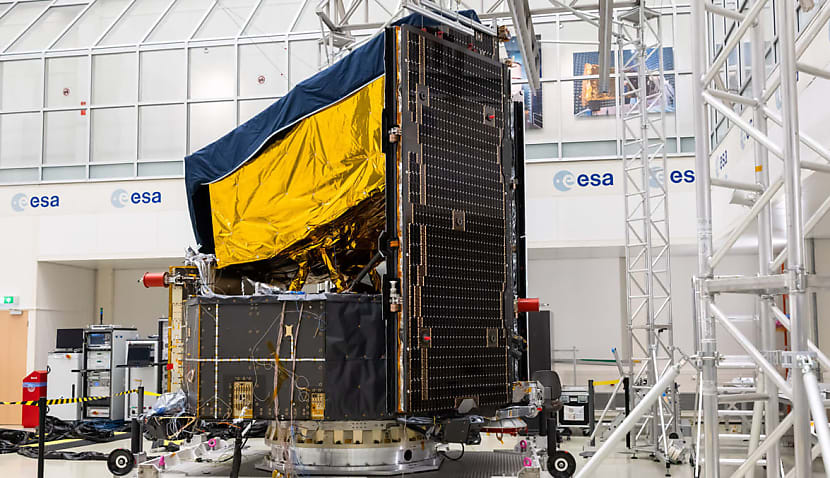Plato is on track for the final key tests to confirm that it is fit for launch and onward to the European Space Agency (ESA) mission to discover Earth-like exoplanets.
The spacecraft has been housed at ESA’s Test Centre in the Netherlands. The final two components will allow the craft to generate the electricity needed to power its electronics and keep scientific equipment in shadow. After mounting the combined sunshield and solar array module, engineers tested whether it could correctly deploy. They deployed the left and right wing separately in late September.
To spot exoplanets, Plato carries 26 advanced cameras tasked with capturing the tiniest variations in the intensity of a star’s light. To achieve the necessary high sensitivity, the cameras must be kept cool, so that each camera is kept at its best-focus temperature around minus 80 degrees.
Protected from sunlight by the sunshield and facing deep space, Plato’s scientific instruments will cool down and stay at the required frigid temperature throughout the mission’s lifetime.
“With this operation, we have completed the Plato spacecraft. The combined sunshield and solar array module was the last remaining essential part,” said Thomas Walloschek, ESA’s Plato project manager.
“It is very satisfying to have reached this moment and to see Plato in its final shape. This is the result of an excellent cooperation between ESA, the Plato Mission Consortium members and Plato's industrial core team.”
Plato is on track to launch in December 2026, as originally planned, on an Ariane 6.
Planned testing will involve vigorously shaking the spacecraft and blasting it with powerful noise during vibration and acoustic tests that mimic the mechanical stresses of a rocket launch. Then placing the spacecraft inside the Large Space Simulator, Europe’s largest cryo-vacuum chamber, to give a first taste of space’s harsh environment.
“Over the years we have seen what Plato would look like in countless detailed drawings and simulated images, yet seeing the real, completed spacecraft feels very special,” said Ana Heras, ESA’s Plato project scientist.
“Plato has a distinctive design, conceived to efficiently integrate its advanced cameras within the spacecraft. Its overall layout is optimised to monitor more than 150,000 bright stars at the same time, with high precision. This will enable scientists to hunt for terrestrial planets orbiting stars similar to our sun.”
Plato’s scientific instrumentation, consisting of the cameras and electronic units, is provided through a collaboration between ESA and the Plato Mission Consortium composed of various European research centres, institutes and industries. The spacecraft is being built and assembled by the industrial Plato Core Team led by OHB together with Thales Alenia Space and Beyond Gravity.

